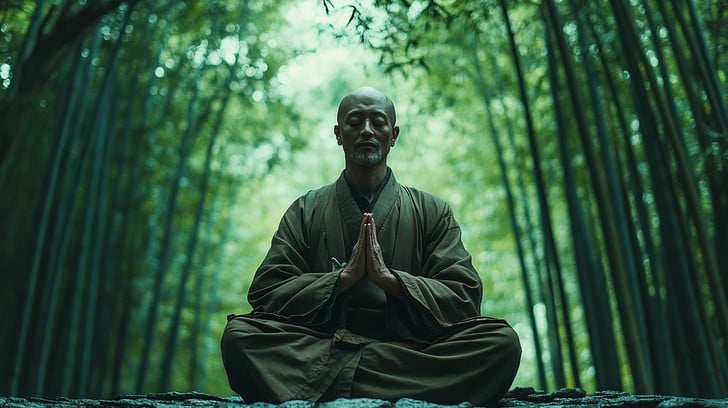Body Scan Meditation is a foundational mindfulness practice designed to bring attention to the physical sensations of the body, one part at a time. It’s a powerful tool for cultivating embodied awareness, reducing stress, improving sleep, and fostering a deeper connection between the mind and body. Originally popularized in the West through Mindfulness-Based Stress Reduction (MBSR) programs developed by Jon Kabat-Zinn, body scan meditation is accessible to people of all experience levels.
This article will explore what body scan meditation is, its origins and benefits, how to practice it effectively, and how it compares to other mindfulness techniques.
What is Body Scan Meditation?
Body scan meditation is a mindfulness practice that involves systematically focusing your attention on different parts of your body, usually starting at the feet and moving upward to the head (or vice versa). The aim is to notice sensations—such as warmth, tingling, tension, numbness, or pain—without judgment or the need to change anything.
The body scan is often used as a foundational meditation practice because:
- It helps anchor the mind in the present moment.
- It trains the ability to observe without reacting.
- It cultivates body awareness, which is essential for emotional regulation and stress reduction.
Unlike concentration meditation (which focuses on one point), or Vipassana (which aims for insight into impermanence and non-self), body scan meditation emphasizes mindful observation of the body as a whole.
Historical and Scientific Background:
While mindfulness practices including body awareness have roots in Buddhist vipassana traditions, the modern body scan technique was popularized by Jon Kabat-Zinn in the late 1970s as part of his Mindfulness-Based Stress Reduction (MBSR) program. His goal was to make mindfulness accessible in medical and psychological settings, particularly for patients dealing with chronic pain and stress.
Since then, body scan meditation has been studied extensively in scientific literature and shown to provide multiple psychological and physical benefits.
How to Practice Body Scan Meditation:
Here’s a step-by-step guide to doing a full-body scan meditation. It can be practiced lying down (common), sitting, or even standing.
Before You Begin:
- Duration: 10–45 minutes
- Location: Choose a quiet, comfortable place where you won’t be disturbed.
- Posture: Lying flat on your back on a yoga mat or bed is most common. You can also sit if lying down isn’t possible.
- Mindset: Approach the practice with curiosity, patience, and openness.
Step 1: Settle and Breathe
- Close your eyes gently.
- Begin with a few deep breaths, inhaling through the nose and exhaling through the mouth.
- Allow your body to settle and your mind to slow down.
Step 2: Bring Awareness to the Whole Body
- Sense your body lying or sitting.
- Feel the points of contact between your body and the ground.
- Notice any areas of tension or relaxation.
Step 3: Start at the Feet
- Bring your attention to your toes.
- Notice any sensation: warmth, coolness, tingling, numbness, or pressure.
- If there’s nothing noticeable, that’s okay—just note “no sensation” and move on.
Step 4: Move Slowly Upward
Continue to direct your attention gradually through the body, spending 10–20 seconds on each part:
- Feet and ankles
- Calves and shins
- Knees
- Thighs and hips
- Pelvic area and lower abdomen
- Stomach and lower back
- Chest and upper back
- Shoulders
- Arms, hands, and fingers
- Neck and throat
- Face, jaw, and eyes
- Crown of the head
Step 5: Observe Without Judgment
- You may feel pain, tightness, or discomfort. Rather than resisting or trying to fix it, simply observe it with kindness.
- Say silently to yourself: “This is how it feels right now.”
Step 6: Breath Integration
-
As you move through each body part, you can choose to breathe into that area, imagining the breath bringing awareness and space.
Step 7: Conclude with Whole-Body Awareness
-
After scanning the whole body, expand your attention to include your entire body as one.
-
Rest here for a few minutes, sensing the body as a whole breathing organism.
Step 8: Gently Return
- Begin to wiggle your fingers and toes.
- Open your eyes slowly.
- Take a moment to notice how you feel.
Tips for an Effective Practice:
- Go slow: It’s not a race. The slower you go, the deeper your awareness becomes.
- Be consistent: Even 10 minutes a day builds long-term benefits.
- Expect mind-wandering: Your mind will wander. That’s normal. Just notice and gently return to the body.
- Use a guided meditation: Especially for beginners, guided body scan meditations (via apps or audio recordings) can be helpful.
- Don’t aim to relax: Ironically, the best way to relax is to stop trying. Your job is to observe—not to achieve a certain state.
Benefits of Body Scan Meditation:
Body scan meditation offers a wide array of benefits supported by both traditional experience and modern research:
1. Reduces Stress and Anxiety:
By tuning into the present-moment sensations of the body, you interrupt the cycle of rumination and overthinking, common in stress and anxiety. This allows the nervous system to relax.
2. Improves Sleep:
Practicing a body scan before bed helps release physical tension and calm the mind, making it an excellent tool for combating insomnia.
3. Enhances Mind-Body Awareness:
Regular practice increases your sensitivity to internal cues such as hunger, fatigue, and emotional states—supporting healthier lifestyle choices and emotional regulation.
4. Supports Chronic Pain Management:
Research has shown that body scan meditation can help patients with chronic pain relate to their discomfort differently—reducing suffering even if pain is still present.
5. Increases Emotional Intelligence:
By becoming more aware of body sensations linked to emotions (like tightness in the chest or stomach knots), practitioners become more emotionally self-aware and less reactive.
6. Strengthens Focus and Attention:
This practice improves your ability to stay present and sustain attention over time—skills that are transferable to work, relationships, and daily activities.
Final Thoughts:
Body scan meditation is a gentle yet powerful way to reconnect with your body, calm the mind, and cultivate mindfulness in your daily life. Whether used as a daily practice, a way to relax before sleep, or part of a broader mindfulness program, the body scan helps deepen your relationship with your inner experience—free from judgment or resistance.
Over time, this simple act of scanning your body becomes more than just a relaxation technique—it becomes a gateway to self-awareness, emotional resilience, and inner peace.






